Having been cultivated since antiquity, the lily has earned its famed position in the hearts of gardeners and florists all over the world. It is this popularity of its iconic flowers that can be attributed to the vast number of cultivars and extensive range of colors and patterns that are available in the modern day. Lily bulbs are also widely available and easy to care for in the garden, provided you follow a few basic guidelines.
If you’re interested in growing some of these flower powerhouses, this guide will get you started with the information you need and some suggestions for which cultivars to try out.
| Botanical Name | Lilium sp. |
| Popular Options | Thousands of cultivars, both species and hybrid. Tiger lily (Lilium lancifolium); Leopard lily (Lilium pardalinum); Madonna lily (Lilium candidum) |
| Sunlight | Full sun preferred, 6-8 hours per day. Can vary depending on the cultivar. |
| Water | Sensitive to moisture. Soil should be kept moist and cool throughout the growing season. Do not allow the soil to become completely saturated or over-saturated. |
| Soil | Well-draining, high in organic matter. Mulch or shade around the base of plants to keep soil and plant root zones cool during hotter months. |
| Hardiness | Generally, winter is hardy in USDA Zones 4-9. May vary depending on the cultivar. Bulbs may be dug up in winter and stored indoors for spring re-planting. |
| Beginner Friendly? | Generally, yes. With proper placement and soil conditions. |
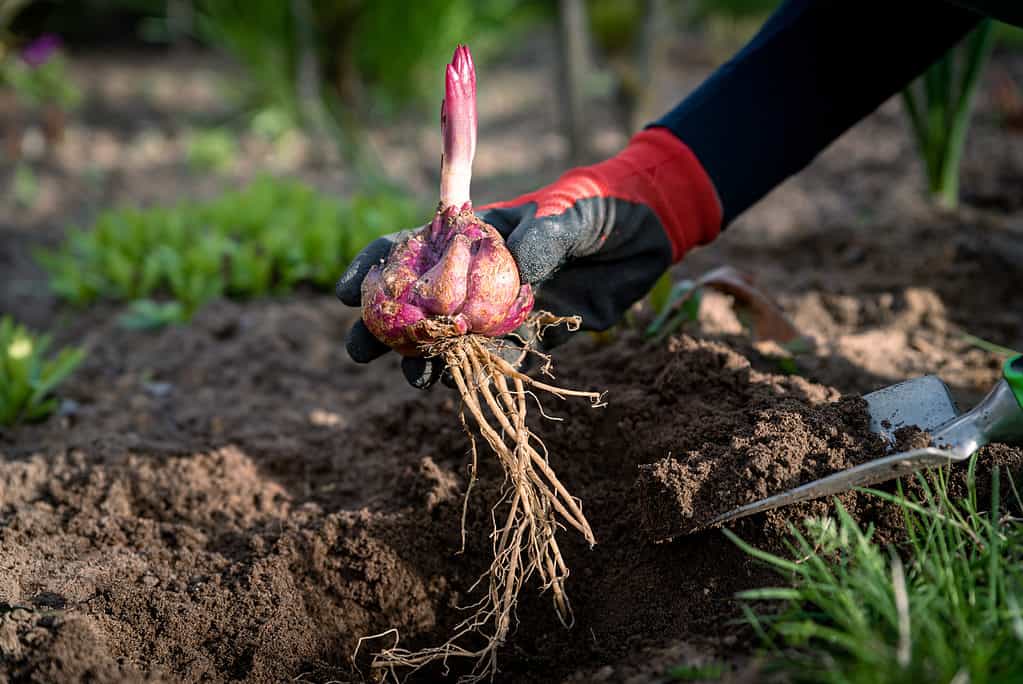
Lily bulbs are widely available and easy to care for in the garden, provided you follow a few basic guidelines.
©Damian Lugowski/Shutterstock.com
How Are Lilies Classified?
While many flowering plants are referred to as lilies, not all of them are. There are over 100 species of true lilies, which all belong to the genus Lilium. These perennial flowering plants are native throughout the northern hemisphere, showing up across North America, Europe, and Asia.
Not only are members of the genus Lilium true lilies, but the majority of them also produce true bulbs. Structures that perform similar nutrient storage functions such as tubers, corms, and rhizomes, are often mistakenly referred to as bulbs. However, true bulbs differ in structure. They have specialized underground leaf tissues, called scales, which store nutrients for use and development during the plant’s dormant period.
Due to the popularity of their large, colorful flowers, many wild lily species have been brought into cultivation, and there are now thousands of cultivars grown throughout the world. Thankfully, with so many cultivars in existence, extensive work has been done to place hybrid lily cultivars into nine distinct divisions based on their genetic lineage.
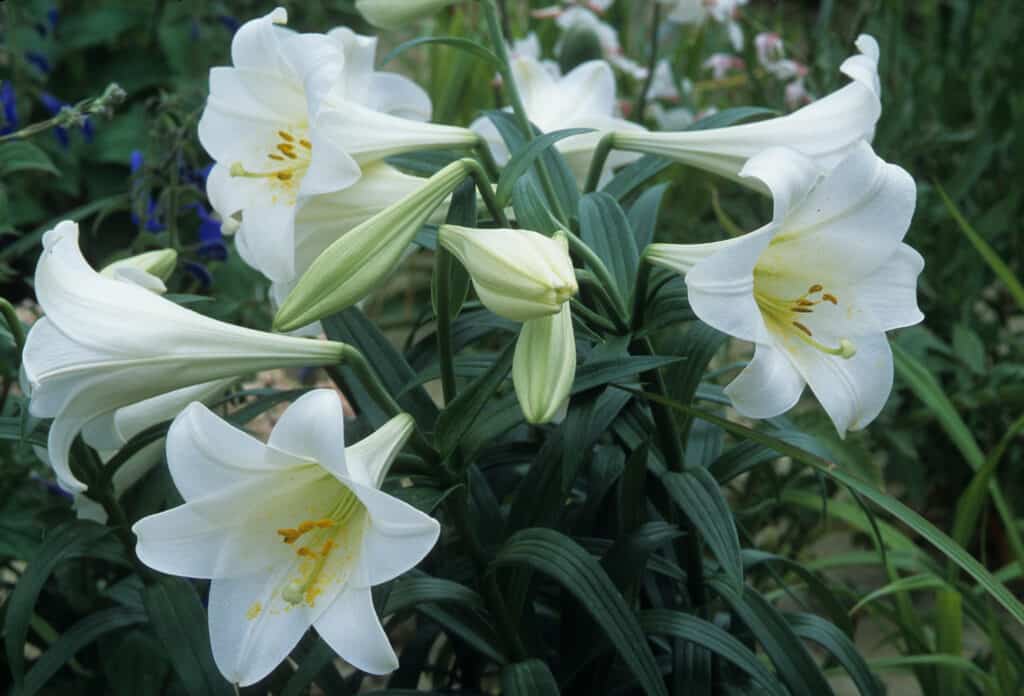
There are over 100 species of true lilies, which all belong to the genus
Lilium.
©COULANGES/Shutterstock.com
Lily Bulbs For Your Garden
Lily bulbs are diverse in their growth characteristics, growing to heights of anywhere from 1-8 feet, and producing a wide array of scents, colors, and variegations. Not only this, but their flowering periods can differ greatly depending on which species or hybrid parentage they are descended from. With so much variation, it can be difficult to choose exactly the right cultivar for your garden. To help you decide, we’ve listed five particularly interesting lily cultivars below.
Tiger Lily (Lilium lancifolium)
The tiger lily, or Lilium lancifolium, is a gorgeous species of lily native to China, Japan, and Korea. Appearing in mid-to-late summer, its many striking, downward-facing, orange blooms are covered in black spots and can grow up to 5 inches in diameter. Tiger lilies tend to grow to between 2 and 5 feet in height, with a spread of 6-8 inches. They are low-maintenance plants, tolerating not only slightly acidic to slightly alkaline soils but part shade as well. They are also naturally resistant to disease. These lilies tend to flower later in the season than other cultivated lilies. Mix other cultivars into your garden bed alongside your tiger lilies to ensure beautiful blooms all season long.
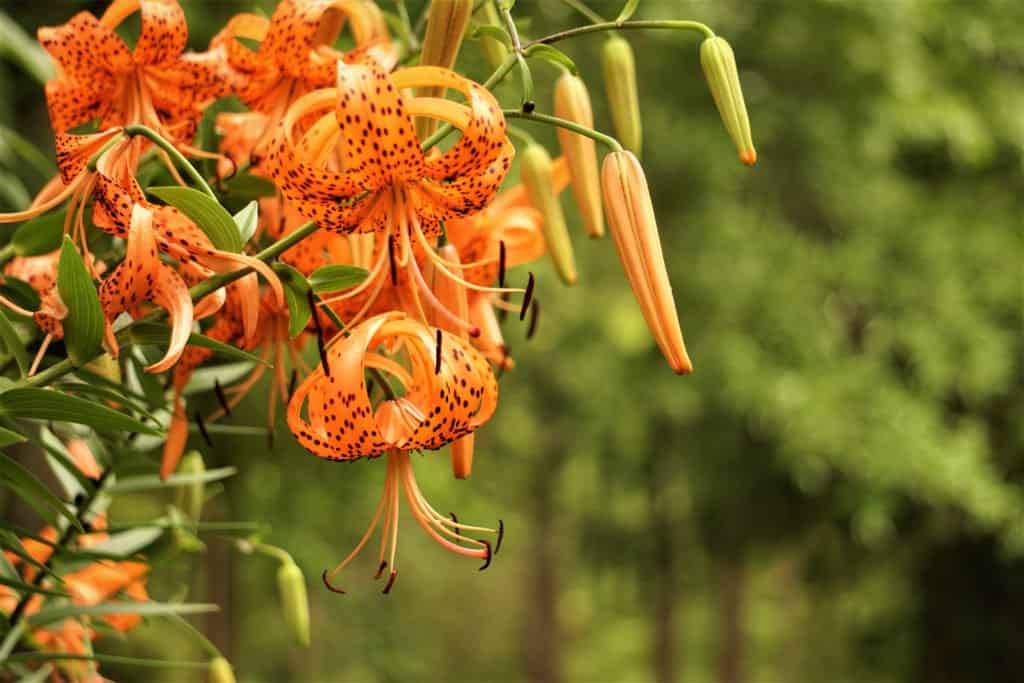
The tiger lily, or
Lilium lancifolium, has downward-facing, orange blooms that are covered in black spots and can grow up to 5 inches in diameter.
©Ancha Chiangmai/Shutterstock.com
Leopard Lily (Lilium pardalinum)
Being a woodland lily species, the leopard lily, or panther lily as it is sometimes called, tolerates partial shade very well. Arriving in late spring and mid-summer, each stem can produce up to 10 orange to yellow blossoms which are covered in brown spots. This color scheme lends this lily the resemblance of leopard fur and is the reason for the flower’s namesake. Its flower stems can reach heights of 6-8 feet. Because of their height, these plants may need staking to keep their stems from bending over.
The leopard lily can self-propagate, either by seed or by expanding underground with its spreading rhizomatous bulb structure. These lilies are an example of an American wild species whose nutrient storage structure differs from that of a true-bulbed lily.
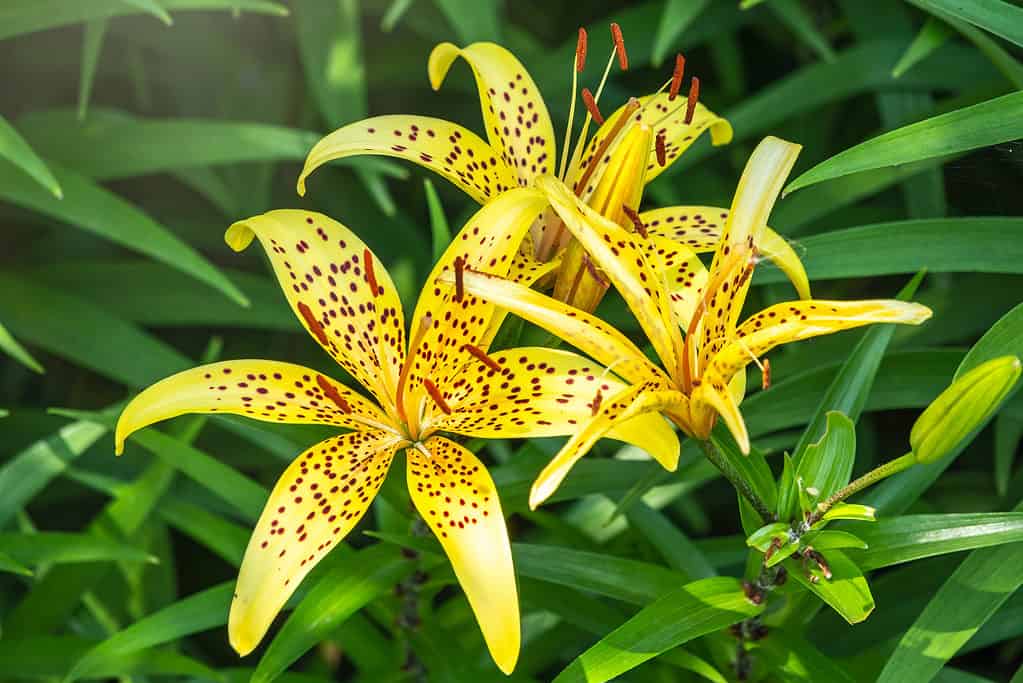
is also known as leopard or panther lily because its color scheme resembles leopard fur.
©iStock.com/Dmitry Potashkin
Madonna Lily (Lilium candidum)
Lilium candidum, or the Madonna lily, is a white-flowering member of the lily family. This species has been in cultivation for thousands of years, celebrated for its enthralling fragrance and pure white, trumpet-shaped flowers that bear golden yellow pollen in their centers. Its stems can quickly grow to heights of 4-6 feet upon their arrival in the spring.
While they will grow in full sun or part shade, these plants do best in partial sun environments, where they receive less direct heat from the sun’s rays. In warmer, southern areas of the United States, this lily may go dormant during the summer heat but will re-emerge as temperatures drop in the autumn.
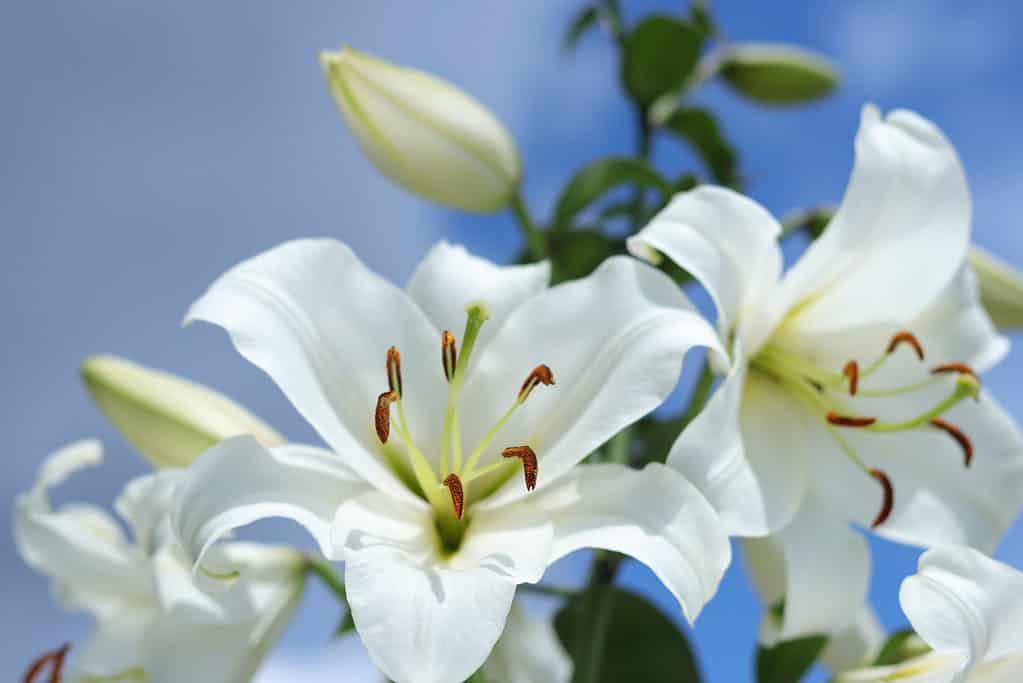
The Madonna lily is appreciated for its fragrance and pure white, trumpet-shaped flowers that bear golden yellow pollen in their centers.
©iStock.com/Mariia Romanyk
Lilium sp. ‘Golden Splendor’
These lilies are hybrid trumpet cultivars and produce gorgeous golden blooms, backed in purple, that are borne atop their 4-6 feet’ tall stems in wide groups called umbels. Each umbel can consist of 12-20 fragrant flowers that each measure up to 8 inches in length.
Bulbs of these lilies can be planted in either the spring or fall, with blooms appearing in early to mid-summer. They, like most other lilies, prefer full sun with shaded root zones and are not particularly picky about their soil conditions as long as the soil itself is well-draining.
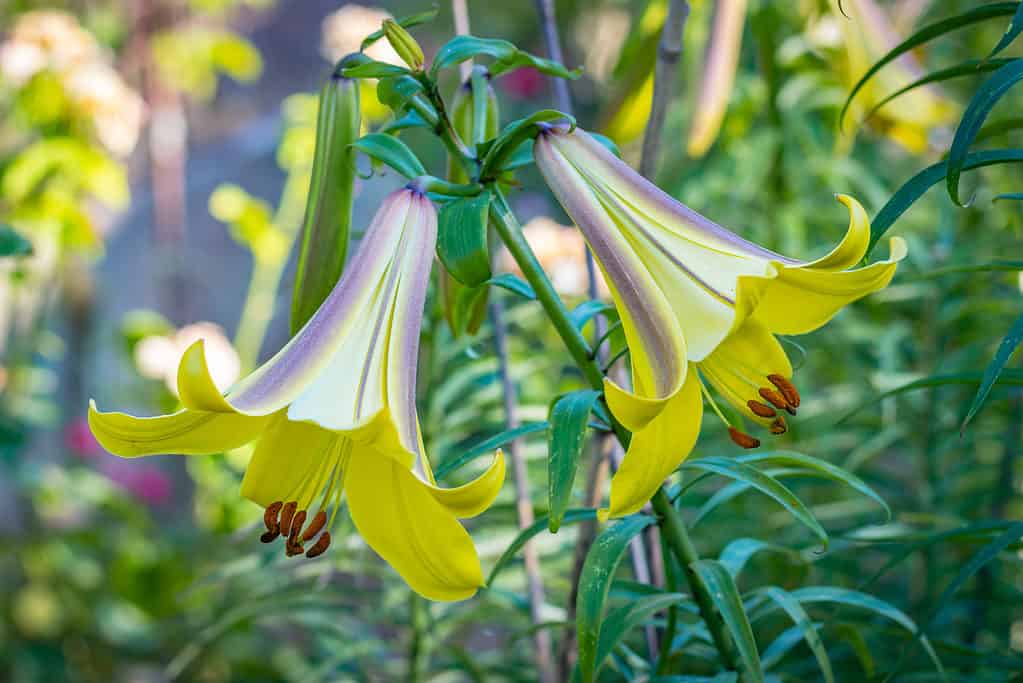
‘Golden Splendor’ produces gorgeous golden blooms, backed in purple, that are borne atop their 4-6 feet tall stems.
©CoinUp/Shutterstock.com
Lilium sp. ‘Orange Pixie’
Belonging to the Asiatic hybrid division of cultivars, these dwarf lilies grow to a minuscule height of only 8-12 inches! Because of this, they are excellent candidates for container planting and make beautiful additions to any porch garden. Because their flowers do not produce much of a fragrance, their freckled, deep orange blooms and novel height are their primary attention-drawing characteristics. Plant them about 6 inches deep in containers in the autumn, making sure that their soil is well-draining to prevent bulb rot. Bulbs will likely need to be re-potted every few years.

‘Orange Pixie’ only grows to a height of 8-12 inches making it an excellent candidate for container planting.
©Peter Etchells/Shutterstock.com
How to Care for Lily Bulbs
To ensure that your lilies are healthy and produce the best possible blooms, it is important to remember these basic care guidelines:
Sunlight
When planting your lily bulbs, you should usually choose a location in the garden that receives 6-8 hours of sunlight per day. These plants require a lot of suns so that they can make and store enough nutrients to sustain them through the winter and into the next growing season. Be sure to mulch around the base of the plant to help keep the soil cool and prevent it from drying out. This can also be accomplished via companion planting, using shorter-growing plants to shade your lilies’ root zone.
Water
Lilies need a fair amount of water. It is important to ensure that their soil stays moist and cool throughout the growing season. Generally, it is a safe bet to water these plants every few days, or about an inch per week. This, of course, may differ depending on your own local weather, soil composition, and the placement of your plants in the garden. You should be especially sure to avoid overwatering your lilies, as standing water can create an anaerobic soil environment in which conditions are ripe for root or bulb rot.
Soil Conditions
Ensuring your soil is well-draining is very important. While overwatering alone can cause standing water, so can soil that does not have enough drainage. The majority of lilies do particularly well in nutrient-rich, slightly acidic soils that contain plenty of organic matter. This encourages nutrient uptake and also helps the soil retain moisture.
Pests and Disease
Most lilies struggle with the same pests and diseases in the garden. Slugs, snails, thrips, and beetles love to feast on these plants’ foliage. Aphids are the primary vector of the lily mosaic virus. This virus is incurable and lethal to lily plants. The best method to control infection is to manage aphid populations in the garden.
Lilies are also particularly susceptible to botrytis. Initially white and turning gray over time, this fungus invades and kills back tender young leaves and flower buds if not managed. Infected parts may appear wilted, shriveled, discolored, and gray. Root rot and bulb rot are also common concerns in areas of high moisture. Soils become anaerobic due to a lack of adequate drainage.
The photo featured at the top of this post is © svf74/Shutterstock.com
Sources
- University of Minnesota Extension, Available here: https://extension.umn.edu/how/planting-bulbs-tubers-and-rhizomes
- South Dakota State University Extension, Available here: https://extension.sdstate.edu/growing-lilies
- RHS, Available here: https://www.rhs.org.uk/disease/lily-diseases
- RHS, Available here: https://www.lilies.org/culture/types-of-lilies
- Wisconsin Horticulture, Available here: https://hort.extension.wisc.edu/articles/easter-lily-lilium-longiflorum
- North Dakota State University, Available here: https://www.ndsu.edu/pubweb/chiwonlee/plsc368/student/papers02/mwebster/easterlily.html
- North Carolina Extension Gardner Plant Toolbox, Available here: https://plants.ces.ncsu.edu/plants/lilium-candidum
- Missouri Botanical Garden, Available here: https://www.missouribotanicalgarden.org/PlantFinder/PlantFinderDetails.aspx?kempercode=a462
- Missouri Botanical Garden, Available here: https://www.missouribotanicalgarden.org/PlantFinder/PlantFinderDetails.aspx?taxonid=244750&isprofile=0&
- Missouri Botanical Garden, Available here: https://www.missouribotanicalgarden.org/gardens-gardening/your-garden/help-for-the-home-gardener/advice-tips-resources/pests-and-problems/diseases/fungal-spots/botrytis-blight
Thank you for reading! Have some feedback for us? Contact the AZ Animals editorial team.







